I’m not one to gush over kitchenware, but Corelle dinnerware has won me over, and I think it’ll win you over too. It’s lightweight, durable, and stylish enough to make your everyday meals feel special without breaking the bank.
Whether you’re setting the table for a family dinner or just grabbing a quick bite, Corelle’s blend of practicality and charm is hard to beat. Trust me, you’ll want these dishes in your kitchen.
My Experience With Corelle Dinnerware
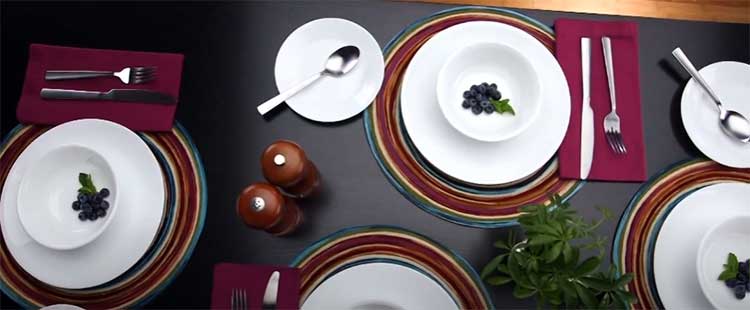
Picture this: I’m moving into my first apartment, and my kitchen is a blank slate. I needed dinnerware that could handle my clumsy tendencies, look good on my mismatched table, and not cost a fortune. Enter Corelle.
I picked up a 16-piece set in the Winter Frost White pattern, drawn to its clean, timeless look. The moment I held one of those plates, I was shocked at how light it was—like, featherlight compared to the heavy ceramic dishes I’d used at my parents’ house.
It felt almost too delicate, but boy, was I wrong about that.
My first week with Corelle was a crash course in its durability. I accidentally dropped a dinner plate while washing dishes (classic me), and it didn’t even chip. It just bounced off the tile floor with a soft clink and sat there, mocking my clumsiness.
I’ve since put these dishes through the wringer—stacking them haphazardly, tossing them in the dishwasher, and even microwaving leftovers without a second thought. They’ve held up like champs. The plates and bowls stack so neatly in my tiny cabinets, saving space I didn’t even know I needed.
And the mugs? Okay, they’re stoneware, not the same Vitrelle glass, so they’re a bit heavier and less durable, but they’re still functional.
What I love most is how Corelle fits into my life. I’ve hosted brunches where the plates looked elegant with my thrift-store napkins, and I’ve used them for late-night cereal runs without feeling like I’m ruining fancy china.
The only hiccup?
I noticed some faint scratches after a year of heavy use, but they’re barely noticeable unless you’re inspecting them under a magnifying glass. Corelle has become my go-to, and I’m excited to share why it might just be yours too.
Pros of Corelle Dinnerware
- Lightweight Like a Dream
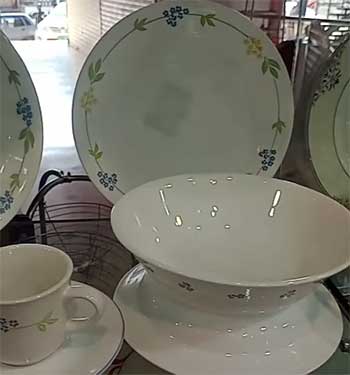
You know that feeling when you’re unloading the dishwasher and dreading the heavy stack of plates? Corelle eliminates that struggle.
These dishes are made from Vitrelle, a three-layer laminated glass that’s so light it feels like you’re carrying paper plates—but way classier.
I can carry a stack of six dinner plates in one hand without breaking a sweat, which is a game-changer for someone like me who’s always juggling too many things.
If you’ve got kids or elderly folks at home, this lightweight design makes handling dishes a breeze.
- Durability That Defies Gravity
Corelle’s claim to fame is its break-resistant magic, and I’m a believer. I’ve dropped plates on my kitchen floor more times than I’d like to admit, and they’ve survived every time. The Vitrelle glass is tempered, making it chip- and crack-resistant under normal use.
Corelle even backs this up with a three-year warranty against breakage, chipping, and staining. Sure, they’re not indestructible—if you hurl one like a frisbee, it might shatter into a million tiny pieces—but for everyday mishaps, they’re tougher than most. I’ve never had to replace a single piece, and that’s saying something.
- Space-Saving Stacking
If your kitchen cabinets are as cramped as mine, you’ll appreciate how Corelle stacks. The plates and bowls nest so tightly that I can fit a full set in half the space of my old ceramic dishes. This is a lifesaver in my small apartment, where every inch counts.
Unlike some bulkier dinnerware, Corelle doesn’t waste space, and the stacks stay stable—no wobbling towers threatening to crash. It’s practical without sacrificing style, which is a rare combo.
- Microwave and Dishwasher Friendly
Life’s too short to hand-wash dishes or worry about what’s microwave-safe. Corelle is both dishwasher- and microwave-safe, making it a low-maintenance dream. I’ve reheated countless meals without worrying about cracks or hot spots, though I’ve learned not to heat an empty plate—apparently, that can cause issues due to the glass’s sensitivity to extreme temperature changes.
The dishwasher cleans them sparklingly without fading the patterns, even after years of use. It’s the kind of convenience that makes you wonder why all dinnerware isn’t this easy.
- Affordable Elegance
Corelle won’t make your wallet cry. A 16-piece set (service for four) can cost as little as $30-$50, depending on the pattern. Compare that to porcelain or stoneware sets that can run into the hundreds, and it’s a steal. Yet, it doesn’t look cheap.
Whether you go for the classic Winter Frost White or a modern pattern like Delano, Corelle adds a touch of sophistication to your table. I’ve gotten compliments on mine during dinner parties, and nobody guesses they’re budget-friendly.
- Variety of Patterns
Corelle offers a pattern for every vibe, from minimalist white to vibrant, retro-inspired designs like Old Town Blue. I went with Winter Frost White because it matches everything, but I’ve been tempted by their newer patterns, like the subtle aqua borders of Delano.
You can mix and match to create a set that’s uniquely you, and Corelle’s website makes it easy to find open-stock pieces if you want to expand your collection. It’s like building your own dinnerware playlist.
Not-So-Good Parts of Corelle Dinnerware
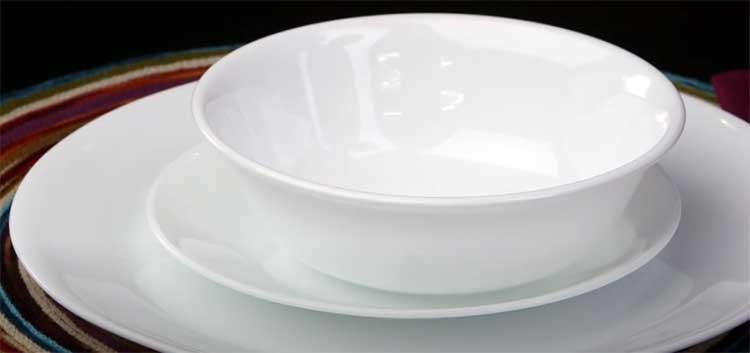
- Shattering Can Be Messy
Here’s the thing: Corelle is durable, but when it does break, it’s dramatic. I haven’t experienced this myself, but I’ve read stories of plates shattering into tiny, sharp pieces that scatter everywhere. It’s because of the tempered glass—same reason car windows break into small bits for safety.
If you drop one on a hard surface like granite, you’ll be sweeping for days. This isn’t a dealbreaker, but it’s something to keep in mind, especially if you’ve got pets or kids running around.
- Stoneware Mugs Are a Weak Link
The mugs in Corelle sets are often stoneware, not Vitrelle glass, and they’re the odd ones out. They’re heavier, less durable, and not made in the USA like the plates and bowls. I’ve chipped one of mine after a clumsy moment, and they just don’t feel as high-quality.
Honestly, I rarely use them because I prefer my glass tumblers. If you’re buying a set, don’t expect the mugs to match the plates’ resilience or lightweight feel.
- Rough Edges on Older Sets
Some users, including me, have noticed rough or bumpy edges on older Corelle dishes. In my case, it’s barely noticeable, but it can feel off if you run your finger along the rim. This seems to happen more with vintage sets or after heavy use, possibly due to wear or manufacturing inconsistencies.
It hasn’t affected functionality, but it’s annoying if you’re picky about texture. Newer sets don’t seem to have this issue as often, based on my research.
- Limited Oven Use
Corelle is microwave-safe, but it’s not as oven-friendly as you might hope. You can use it in a preheated oven up to 350°F, but no broiling or stovetop use. I learned this the hard way when I tried to bake a casserole on a Corelle plate—thankfully, it didn’t break, but I got a warning from the manual afterward.
If you’re someone who loves oven-to-table versatility, this limitation might frustrate you compared to stoneware or porcelain.
- Scratches Over Time
While Corelle is resistant to major damage, it’s not immune to scratches. After a couple of years, I noticed faint marks on my plates from cutting with a knife or stacking them roughly.
They’re not dealbreakers, and you can often buff them out with a gentle cleanser, but it’s worth noting if you’re obsessive about pristine surfaces. It’s a small price to pay for the durability, but perfectionists might wince.
Maintenance Tips For Corelle Dinnerware
- Wash Before First Use
When you first get your Corelle set, give it a good wash. The brand recommends running it through the dishwasher or washing with hot water and detergent to remove any manufacturing residue.
I just tossed mine in the dishwasher, and they came out sparkling. This step ensures your dishes are food-safe and ready for action.
- Avoid Extreme Temperature Changes
Corelle’s Vitrelle glass is tough, but it’s sensitive to sudden temperature shifts. Don’t put a hot plate straight into cold water or heat an empty dish in the microwave—it could crack or shatter.
I learned to let my plates cool slightly before rinsing, and I always make sure there’s food on them when microwaving. It’s a small habit that keeps your dishes in top shape.
- Use Non-Abrasive Cleaners
To keep those surfaces smooth and scratch-free, stick to non-abrasive cleaners. I use a soft sponge and regular dish soap, but if you notice stains or marks, a product like Bar Keepers Friend works wonders without damaging the glaze.
I had a stubborn tomato sauce stain once, and a quick scrub with it made the plate look brand new.
- Stack Carefully
Corelle’s stackability is a huge plus, but don’t get too cocky. Stacking them too tightly or banging them together can cause micro-scratches or, in rare cases, chips.
I keep a soft cloth between my plates when storing them for long periods, but for everyday use, just stack them gently. They’re designed to nest snugly, so no need to force it.
- Handle Mugs with Extra Care
Since the mugs are stoneware, treat them a bit more delicately. I hand-wash mine to avoid chipping in the dishwasher, and I never stack them with the glass plates to prevent accidental damage.
If you’re rough on dishes like I can be, consider replacing the mugs with Corelle’s glass tumblers for consistency.
- Check for Wear and Tear
Every few months, I give my Corelle dishes a quick once-over for rough edges or scratches. If you notice anything, a gentle polish with a non-abrasive cleaner can smooth things out.
For vintage sets, check for signs of glaze wear, especially if they’re pre-2005, as older patterns might have lead in the paint. I stick to post-2005 sets for peace of mind.
Comparing Corelle To Other Brands
Let’s see how Corelle holds its own against some popular dinnerware brands. I’ve used or researched these competitors to give you a clear picture of what sets Corelle apart and where it might fall short, focusing on key aspects like durability, weight, style, and practicality.
- Corelle Vs. Our Place Dinnerware
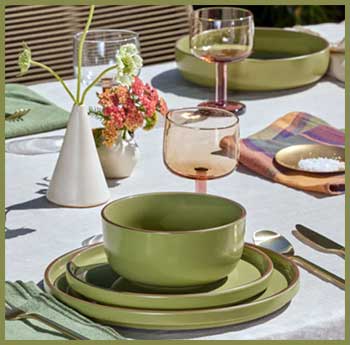
Our Place, known for its Instagram-famous Always Pan, also offers ceramic dinnerware that’s all about minimalist chic.
I tried their plates at a friend’s dinner party, and they have a sleek, modern vibe with earthy tones that scream “trendy.”
But they’re heavy—way heavier than Corelle’s Vitrelle glass.
I struggled to carry a stack without feeling like I was lifting weights.
Our Place’s ceramic is durable but chips more easily than Corelle, especially if you’re clumsy like me.
They’re also pricier, with a four-piece set costing around $50 compared to Corelle’s $30-$50 for 16 pieces. Corelle wins for affordability and lightweight ease, but Our Place’s aesthetic is a draw if you’re into curated, Insta-worthy tablescapes. Plus, Our Place isn’t as stackable, which is a pain in small kitchens.
- Corelle Vs. Fiestaware
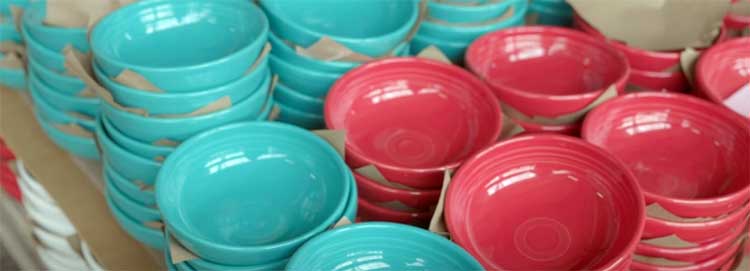
Fiestaware’s bold, colorful ceramic dishes are a classic, and I borrowed a set from my sister to test them out. The vibrant hues—like cobalt blue and sunflower yellow—make every meal feel like a party, but they’re heavy and take up serious cabinet space.
I chipped a Fiestaware plate after a minor drop, something Corelle would’ve shrugged off. Fiestaware’s oven-safe up to 500°F, which beats Corelle’s 350°F limit, making it better for baking. But at $60-$100 for a basic set, it’s pricier, and the weight makes daily use a chore.
Corelle’s lightweight durability and tight stacking make it more practical for everyday meals, but Fiestaware’s personality is unmatched for special occasions.
- Corelle Vs. Pottery Barn’s Cambria Dinnerware
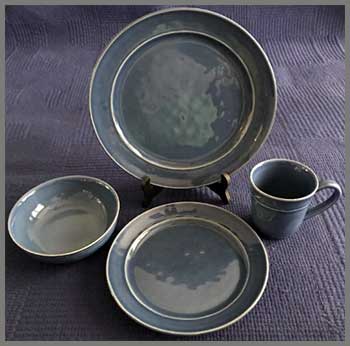
Pottery Barn’s Cambria dinnerware is stoneware with a refined, handcrafted look that feels like it belongs in a farmhouse-chic dining room.
I used a friend’s Cambria set for a holiday dinner, and its textured, earthy finish was gorgeous.
But it’s heavy—think lugging a stack to the table—and chips more easily than Corelle.
A 16-piece Cambria set can cost $150 or more, making Corelle’s $30-$50 price tag a steal.
Cambria’s oven-safe to higher temperatures, which is great for roasts, but it’s not microwave-friendly unless specified, unlike Corelle.
Corelle’s space-saving stackability and durability make it better for daily use, while Cambria’s elegance suits formal settings or those who love a rustic vibe.
Frequently Asked Questions (FAQ)
Absolutely, Corelle is a fantastic choice for most households. Its lightweight Vitrelle glass is incredibly durable, resisting chips and cracks better than most ceramic or porcelain sets. It’s affordable, dishwasher- and microwave-safe, and comes in a range of patterns to suit any style. I’ve used mine for years without a single break, and they still look great. If you want something that’s practical, stylish, and budget-friendly, Corelle’s hard to beat, though the stoneware mugs and limited oven use might be minor drawbacks.
Corelle’s not perfect. When it does break, it shatters into tiny, sharp pieces that are a pain to clean up. The stoneware mugs included in some sets are heavier and less durable than the Vitrelle glass plates and bowls. Some users report rough edges on older sets, and faint scratches can appear over time with heavy use. Also, Corelle’s limited to 350°F in the oven, so it’s not ideal for high-heat cooking. These are minor compared to the benefits, but they’re worth considering.
Rough edges on Corelle dishes usually come from wear over time or manufacturing inconsistencies, especially in older or vintage sets. I’ve noticed this slightly on my plates after years of use—it’s like a subtle bumpiness when you run your finger along the rim. It could be due to heavy dishwasher cycles or stacking wear. Newer sets seem smoother, but if it bothers you, a gentle polish with a non-abrasive cleaner can help. If it’s a vintage set, check for glaze wear, as that might contribute.
Corelle’s magic lies in its Vitrelle glass—a three-layer laminated glass that’s lightweight, durable, and chip-resistant. It’s like the superhero of dinnerware: strong yet featherlight, stackable to save space, and affordable enough for any budget. I love how it handles daily chaos—drops, dishwasher cycles, microwaving—without losing its shine. Plus, the variety of patterns lets you pick something that feels personal. It’s made in the USA, backed by a solid warranty, and has a 50-year legacy of reliability. That’s why it’s a staple in so many homes.
Conclusion: Why Corelle Is Your Next Kitchen Must-Have?
After years of using Corelle, I’m hooked, and I bet you will be too. Its lightweight, durable design makes everyday meals effortless, while the stylish patterns elevate your table without the hefty price tag.
From surviving my clumsy drops to stacking neatly in my tiny kitchen, Corelle delivers practicality and charm. If you’re ready for dinnerware that’s tough, affordable, and easy to love, grab a set—you won’t look back.
